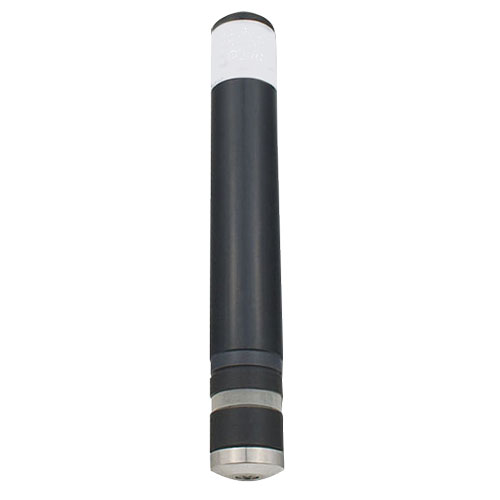EAM-SCP series specific parameter analyzer probe
Peroxyacetic acid can be used for spray washing of food products and disinfection of cooling water. As a disinfectant, it is widely popular in the market because it does not produce harmful products. Like other disinfectants, maintaining an effective residual amount is the key to effectively controlling bacteria. PAA probe is a probe that uses the current method for measurement and is isolated from water by a permeable membrane. When PAA passes through the membrane, it comes into contact with the electrode and is reduced on its surface. The net effect is the current generated by the probe that is proportional to the concentration of PAA. The PAA probe requires the water sample to have a stable flow velocity and pass through the diaphragm at the top of the sensing element. When measuring, the sample should be stirred because the PAA probe cannot operate in static water samples.
Currently, ozone is the most widely used disinfectant for drinking water, second only to chlorine. Although its use is restricted in industrialized countries with highly complete water supply network systems. Ozone treatment has improved the solidification process, although it has its own weakness, that is, there is no residue in the actual use of the water supply system. However, in the water supply system, ozone cannot protect against secondary pollution. It is usually used for pre-treatment of raw water before chlorination in municipal water supply, so that a large amount of chlorine does not need to be added. Although ozone treatment can effectively disinfect water, it is not suitable for most developing countries due to its high cost, as it requires operation and maintenance of infrastructure and secondary protection in the water supply system.
Despite its high reagent cost, bromides are gradually replacing chlorides in water disinfection processes. When used for disinfection, bromide has many advantages compared to chloride, including high pH value, low volatility under high temperature conditions, and poor corrosion resistance.
Main features | SCP-PAA | SCP-H2O2 | SCP-Br | SCP-O3 |
Measuring range | 0~200/500/2000/5000ppm | 0~200/500/20000ppm | 0.05~10ppm | 0~2/5/10ppm |
Measuring method | Electric current method | Electric current method | Electric current method | Electric current method |
PH range | 1~6 | 2~11 | 6.5~9.5 | 2~11 |
Operating temperature | 0~45℃ | 0~45℃ | 0~45℃ | 0~45℃ |
Pressure Range | 0~1 bar | 0~1 bar | 0~0.5 bar | 0~1 bar |
Flow range | 30L/H | 30L/H | 30L/H | 30L/H |
Body material | PVC-U,SS1.4571 | PVC-U,SS1.4571 | PVC-U, PEEK,SS1.4571 | PVC-U,SS1.4571 |
Electrode material | Gold containing silver chloride | Gold containing silver chloride | Gold containing silver chloride | Gold containing silver chloride |
Diaphragm | PTFE | PTFE | PTFE | PTFE |
Connection method | 2-pole terminal | 2-pole terminal | 2-pole terminal | 2-pole terminal |
Compensation method | Temperature compensation | Temperature compensation | Temperature compensation | Temperature compensation |
Power Supply | 12~24VDC | 12~24VDC | 12~24VDC | 12~24VDC |
Output signal | 4~20mA | 4~20mA | 4~20mA | 4~20mA |




